For her one-year-old birthday, my daughter received a ton of toy gifts. But many came with recommended ages above 12 months, including puzzles and stacking magnet toys labeled as good for 18 monthers. So I did what any trying-to-be responsible mother would do, and I put the toys away in my daughter’s closet, with plans to take them out when my tot turned the ages recommended on the boxes.
However, soon after the birthday party, my mother asked me: “Where are the gifts?” When I told her they were up in the closet, she gave me the advice that is today’s hint geared toward making parenting easier and less stressful. Her tip: “Don’t let the year labels on a toy dictate what you give to your child.”
Why? According to my mom, who urged me to take out the toys geared to kids age 18 months to 2 years, “it’s always good to introduce your child to toys that are beyond her age. You don’t want her development to be slowed down. She is old enough to handle them and you will be amazed at how quickly she figures them out.“
And the clincher in her note that persuaded me to bring the toys out of the closest and into my daughter’s regular toy rotation: “Look at you now.” She pointed out that I had an insatiable quest for knowledge (probably one reason why I started this blog) that she partly attributed to my playing with slightly advanced toys. And as usual, my mom was right. Turns out my daughter was perfectly capable of playing with a Melissa & Doug puzzle for 24-month-old toddlers without swallowing the pieces (what I had feared she would do).
To be sure, not everyone agrees with my mom’s tip. Consumer Reports advises parents to “follow the manufacturer’s age recommendations displayed on the package” to a tee when toy shopping, noting that advanced toys can be frustrating rather than challenging for kids below the toys’ recommended ages and age grading “relates to the safety of the toy as well as its play value.”
And just to be clear, I’m not advocating letting kids under the age of three or four play with toys with small parts (anything that can fit inside a cardboard toilet paper roll) that could pose choking hazards. Rather, I’m just suggesting that when the age range on a toy isn’t that far off from your child’s age (say six months above), consider putting the toy in front of your child and supervise a bit to see if he or she is ready to play with it. In other words, just like how we put our kids in whatever size clothes fit them even if they aren’t the exact age on the tag, I’m suggesting doing something similar with toys, with supervision of course.
This also means that sometimes, as every kid’s development is different, your kids won’t be ready for toys even though they’ve hit the recommended age. As the safety experts say, follow your own best judgment when selecting toys, using the recommended ages as a starting point (more on the toy age guidelines can be found here).
In fact, while researching this post, I discovered that many moms, including commenters on BabyCenter.com, Mothering.com & CircleofMoms.com, already follow my mother’s wisdom. What’s your take? Do you strictly follow toys’ recommended ages? Why or why not?


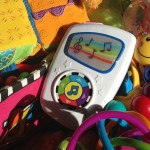
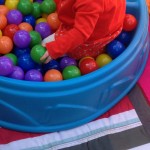
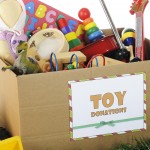
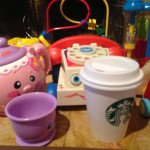
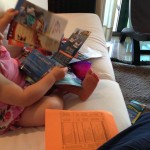
This unavoidably happens too when you have more than one child. It would be nearly impossible to keep all my older child’s toys away from my one year old. So, before my son started crawling, we just did a search for choking hazards and let everything else stay. Hopefully it’s a head-start for his developing brain, but even if it’s not, he certainly seems to be having fun drooling on everything. 🙂